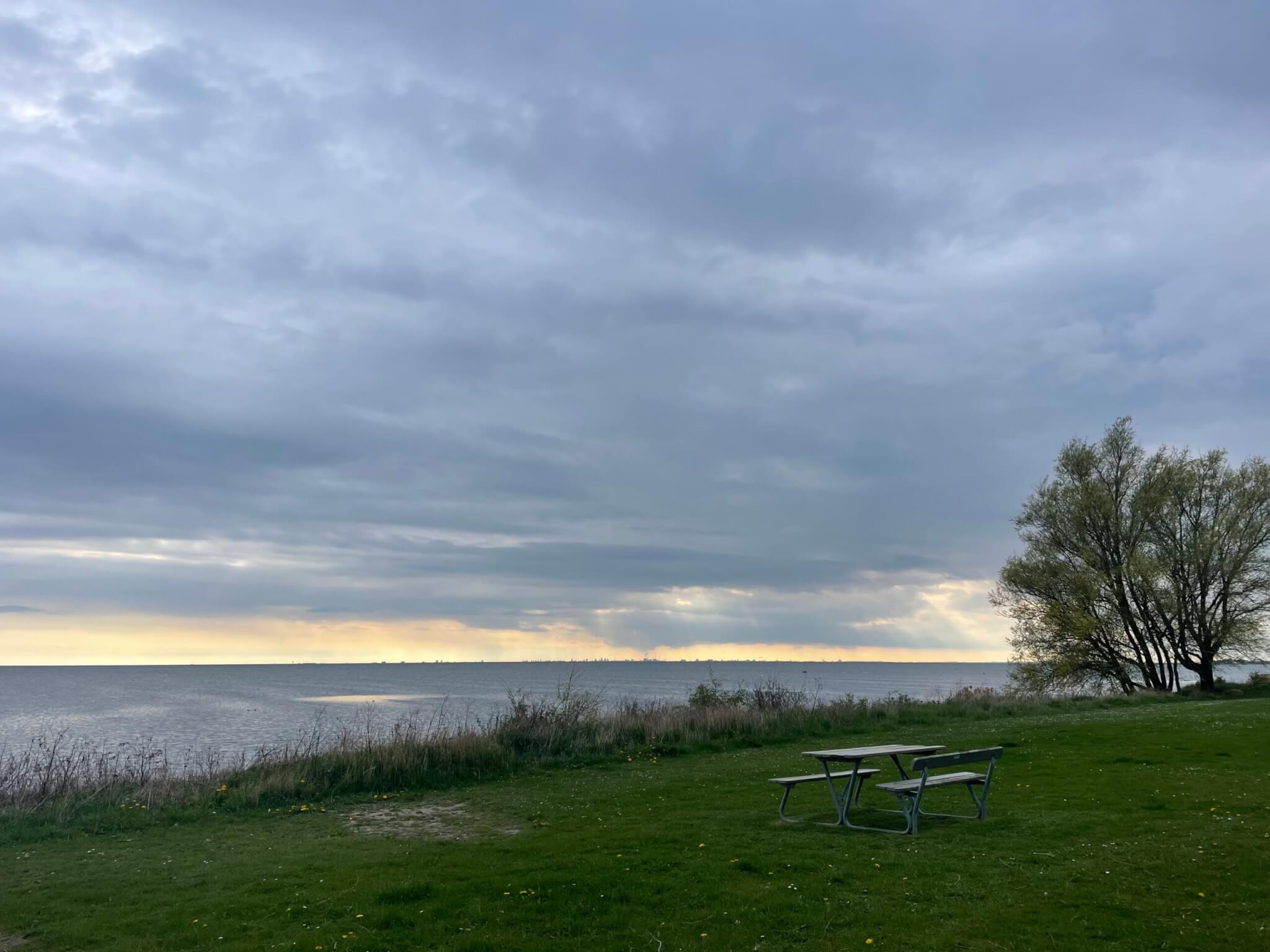
Reflections on the workshop “Pedagogy of Hope” by Diana Holmqvist
On Friday, I participated in a workshop on the “pedagogy of hope”, that Diana Holmqvist from Linköping University ran. Since she is one of the two authors of my current favourite article on “carving space to learn for sustainable futures“, I absolutely wanted to attend despite feeling overwhelmed and overworked and close to burnout. And I am glad I did! Even though I dropped out after a while when I noticed that my brain really needed a break (and then I took a nap and then I went for a dip, which you see documented in the photos in this post).
But the part of the presentation that I did attend really helped me understand a frustration I have had for a long time — people hoping in ways that are different from mine — but also that there are things we can do about it, and that there is literature on how to do it.
In the workshop, we started out with a brainstorm in the chat of what people associate when they hear the term “hope”. One response in the chat stood out to me: “fighting spirit”! To me, what comes to mind when I think about hope is a quote from Vaclav Havel: “Hope is definitely not the same thing as optimism. It is not the conviction that something will turn out well, but the certainty that something makes sense, regardless of how it turns out” (and in my head, what he meant to say, is “something makes sense TO DO, regardless if how it turns out”). To me, also that meme that is currently everywhere in response to “don’t obey in advance“, “f*ck you, make me!“, is full of hope. So to me, hope is really activating to change the world for the better, even when there is currently maybe not a lot of evidence to support the idea that action will actually be able to have that effect.
But clearly, this is not how everybody experiences hope. And in this presentation on Friday, I understood that to many people, hope means something really different. Diana referred to Webb (2013), which I of course then also had to read, and who states that “Pedagogies of hope can serve to reproduce social relations as well as to transform them“. Webb (2013) describes five different modes of hope, which describe very different experiences, but also result in very different approaches to the world:
- Patient hope; which is a passive waiting, a trust in the way of life and that things will turn out to make sense eventually. This mode of hope “refuses to lay down any conditions, makes no claims on the future and insists on nothing“. In many contexts, patience is taught and praised as a virtue. And while I can see that it can potentially result in a sense of being at peace, to me, this type of trusting into something undefined instead of taking matters into my own hands is just plain frustrating; it is naive resignation and opting out of taking responsibility.
- Critical hope; which is about “something is missing“, driving change towards what should be through critique of what is. A pedagogy of critical hope is “a pedagogy driven by the forward pull of the future but a pedagogy that refuses to focus on a final static goal“. Which works well in the context of Teaching for Sustainability — sustainability is emergent, we don’t know what a sustainable world would look like in detail, yet we need to continuously move in that direction. Webb (2013) describes that “here educators variously describe their attempts to carve out spaces in the system that allow one to catch glimpses of future possibilities” (which reminds me of the title of my current favourite article. Coincidence? I think not ;-))
- Sound hope; which is “directed toward a concrete specific goal“, “a desire plus a probability estimate”. It is a “hope because of reality”. I think this is what many teachers I work with would argue they try to teach; incremental changes within the current system that will over time improve everything. But sound hope can become false hope if the probabilities and reality are estimated overly positive. Like, for example, believing that not-yet-invented technology will be the “cure” to climate change, and that then all other problems will also magically cease to exist. To me, teaching that kind of hope is plain irresponsible.
- Resolute hope; which is “hope against the evidence“. I like that mindset, why give up just because success isn’t likely? “For the resolute hoper, agentic self-confidence means, firstly, that ambitious outcomes are more likely to be realised and secondly, that if they are not, hopeful energies will be directed toward different pathways or new goals“. “To hope in this mode is to assume that one has the freedom to initiate events on the basis of goals that one sets oneself, and to assume that the world is fluid, plastic and capable of being moulded by one’s agency as it moves along the pathways one has identified” This mode of hope leads to resilience, and we need that! It is generally useful in teaching, for example projecting high expectations for students and confidence that they can meet those expectations. It can be taught in the classroom, for example by writing and sharing of “hope stories” and developing a habit of hope. But this mode of hope is also very individualist and not considering the wider context, and it also completely ignores that students exist in a context full of bias and adversity and that for some, there is a lot more evidence against than for others. But I wonder if this can also be a collective hope, working towards a shared goal? But then it turns out that that is then actually…
- Transformative hope: “To hope in this mode is to experience the world as open to collective human design and history as an adventure“, and transformative hope demands collective action: “A pedagogy of transformative hope will be explicitly political. It will draw on the thwarted desires of the student body and strive to mobilise action around a vision of a better way of being“. And indeed, according to Freire, paraphrased by Webb (2013), “In the face of a reality that sickens and offends, it becomes the responsibility of the educator to announce their utopian vision and to mobilise support for it, thereby transforming it into a shared utopia dream” — “the transformative pedagogue needs ‘the courage to take responsibility for the job of showing the way’“. With this, “A pedagogy of transformative hope will never hide behind a veil of neutrality and as a consequence will always generate criticism and opposition“. There is work to do, let’s do it!
In Webb (2013), the different modes of hope are discussed a bit in the bigger societal context. For example, “in order to reproduce itself capitalism requires that individuals study, sell their labour power, consume, save and invest. It therefore requires that individuals possess a positive orientation toward the future. Put another way, the reproduction of capitalist relations of production requires that individuals possess hope“. But this works only with certain modes of hope. Patient hope is of course always good for any regime as it works to domesticate and discourage agency. Resolute hope, hope against evidence, hope that something will turn out better because someone promised that it would be, but without actually taking steps yourself to work towards it, keeps society stable. Lastly, sound hope is how institutions work, “This is the hope of the risk assessment, of evidence-based policy and of the ‘realism’ that concedes that human agency is inhibited by wider structural constraints“. So all of these four modes of hope stabilise a system rather than work to transform it (when transforming the system is my ambition, and the ambition I think everybody should have).
It was really eye-opening to see this framework of what hope might mean for other people, and the different consequences on agency that then has, when to me, hope is really an activating emotion in the sense of transformative hope. And it makes it very clear that we need to understand which modes of hope we nurture in teaching and in the world more generally.
Diana, in her workshop, gave several suggestions for how to think about, and nurture, hope. For example, we need epic narratives about the Anthropocene, climate change, etc, but told from many different perspectives, by many different voices. We need to stop talking about road maps, and instead talk about many pathways! She mentioned works by two other authors (Kiguwa (2017), and Lopez (2022), unfortunately I cannot access either of those. What is it with works about transforming society still being published behind paywalls?!), but in a nutshell, the recommendations are to
- build community through agreements (like group contracts), and through practicing empathy (which I will come back to in one of my next blog posts — I was in a super interesting presentation on eco emotions by Marlis Wullenkord last Thursday, and it turns out that being met with empathy when talking about climate anxiety supports becoming active, so practising empathy is really really important!).
- actively work with the bodies in the room (both the teacher’s and students’); they can both open or close room for dialogue. “Bodies” includes also how bodies are being read in terms of gender, race, disability, world views, openness to conversation. Deep reflection on this needs to be facilitated, and implications of positionality are often wrongly assumed if not explicitly discussed.
- build anti-racist decolonial classrooms, by making sure to use methods of critical pedagogy.
- address the affective dimension. Physical and emotional reactions, for example goose bumps, can be the starting point for interruption, for opening up space for reflexivity.
- conduct metadiscussions continuously throughout the course, to continue strengthening the community and empowering students. “Step up and step back”.
- dream up alternative version of what could be (…and in that same future blogpost about Marlis’ work, I will also touch on other presentations in that workshop that presented methods for how to imagine other futures).
- and lastly, and very importantly, make sure to have discussion about what we can do with the new knowledge and skills that we are acquiring in the course. What can we offer to the world, and what responsibility do we have to do it?
At this point, I decided my brain was done for the week, so I don’t know what more I missed out on. But in any case, as evidenced by me writing on this post on both Saturday and Sunday, clearly there were a lot of important things for me to process. I like the Webb (2013) quote that acknowledges that “A pedagogy of transformative hope will never hide behind a veil of neutrality and as a consequence will always generate criticism and opposition“, but that’s just how it is, so let’s get going!
In other news, some wave watching from that dip. Below, you can just about make out Malmö’s “turning torso” on the horizon!
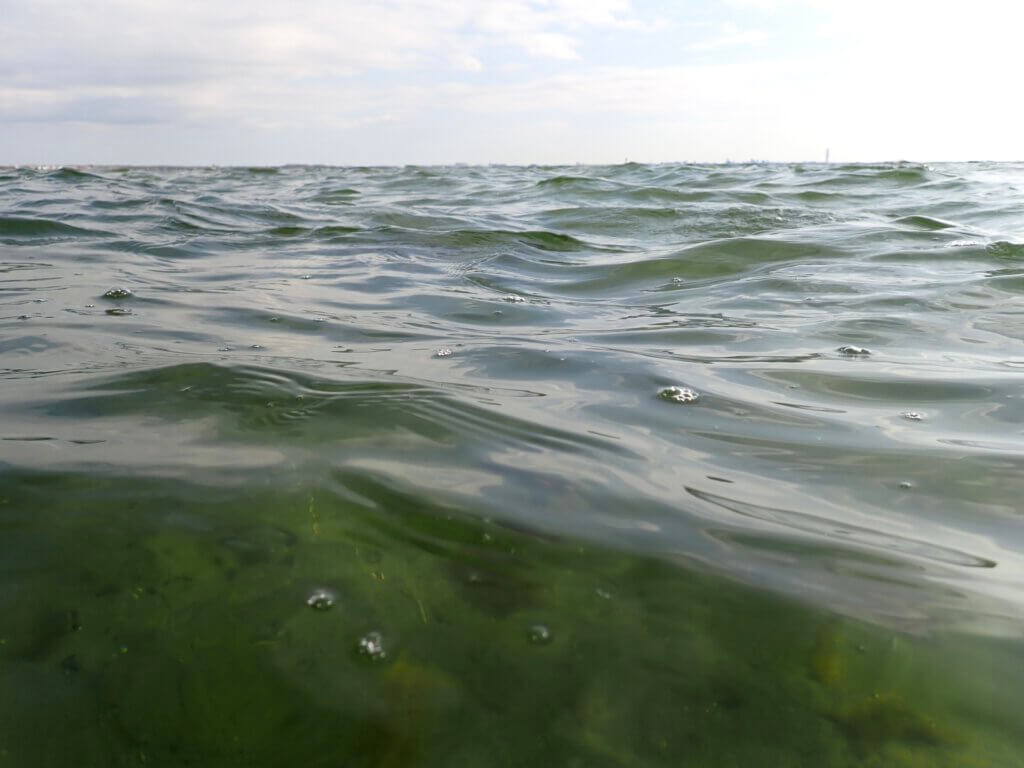
And here I love how the water has such different colours in different areas; the much darker blue in the direction of the dark clouds over land, but the lush green towards the sunny sea…
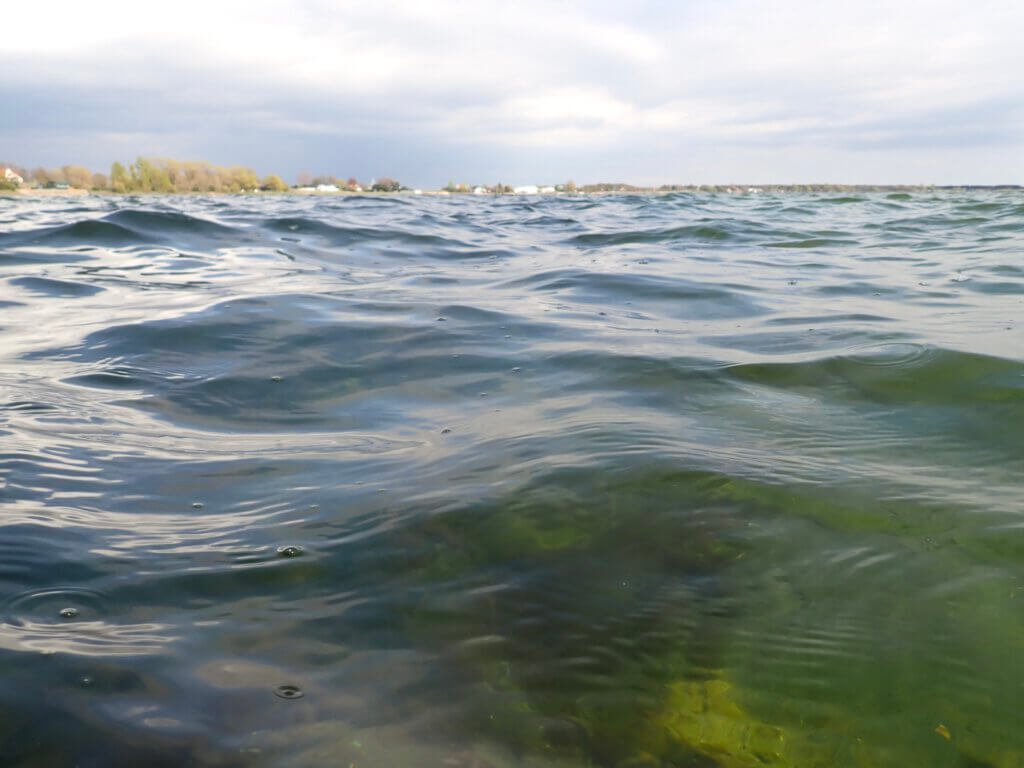
And one more, because it looks so amazing and I love the small structures of capillary waves that look like scratches on the larger, smoother waves.
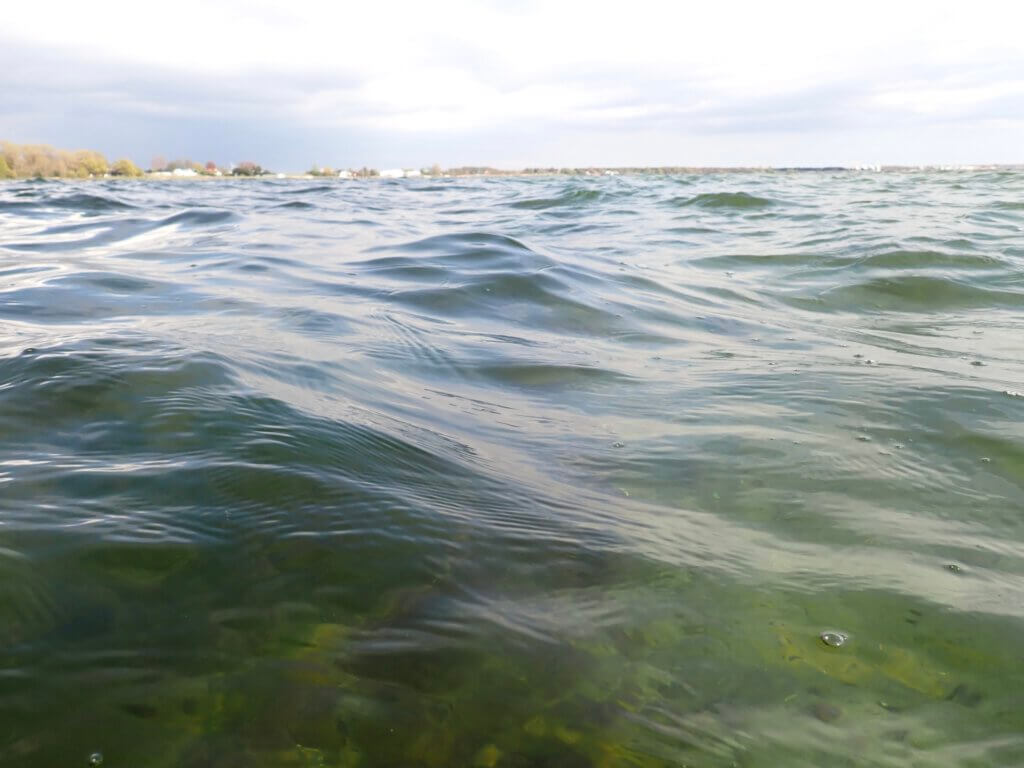
And the weather got more and more dramatic as I was walking home again…
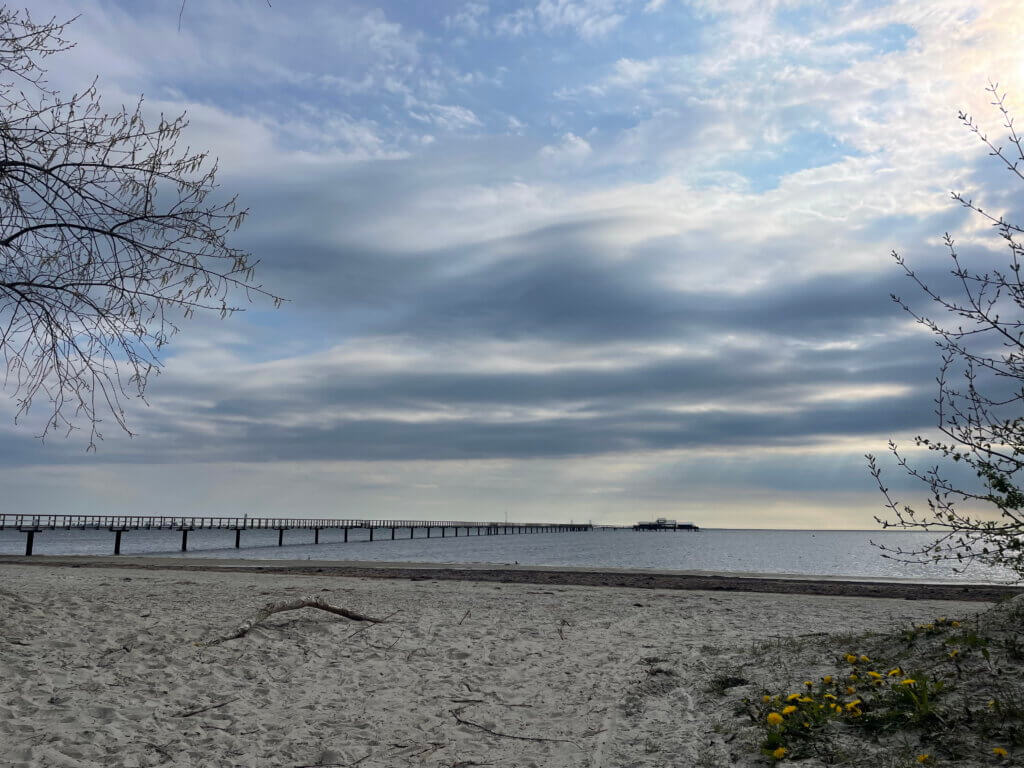
Webb, D. (2013). Pedagogies of hope. Studies in Philosophy and Education, 32, 397-414.
Reflections on the workshop “How to deal with climate anxiety as teachers and researchers?” - Adventures in Oceanography and Teaching says:
[…] in themselves in paradise, while ignoring the world on fire around them… The kind of “patient hope” / “false hope” that I ranted about earlier. Anyway, moving […]